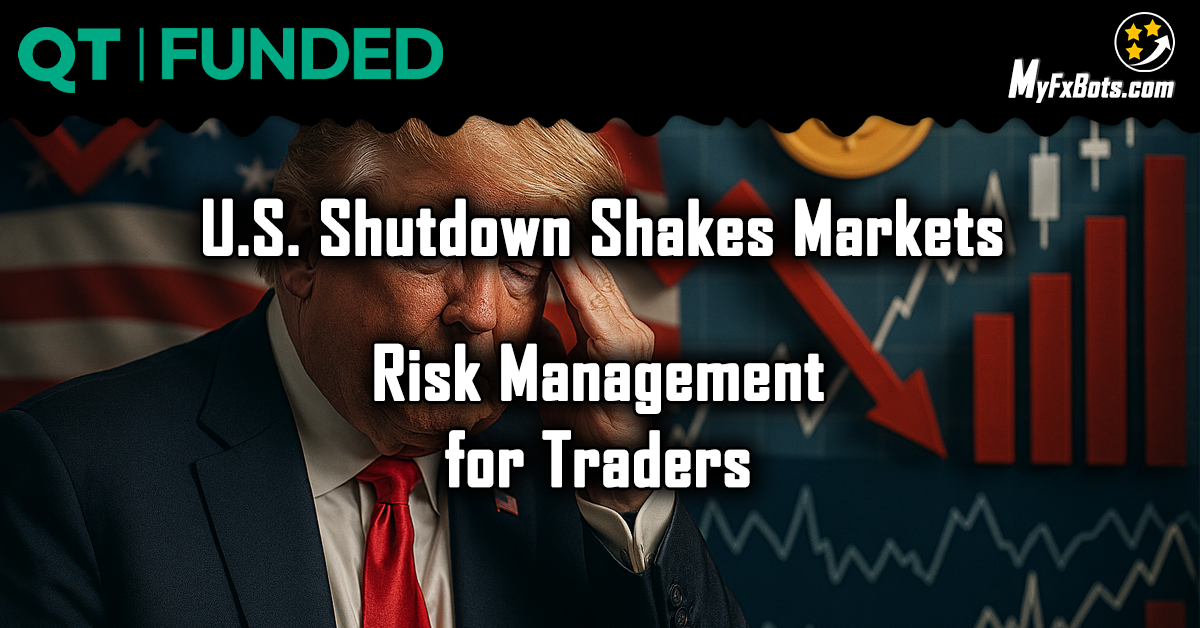Overview
- The U.S. government shutdown has forced multiple macro releases to be postponed or moved with short notice.
- Delays to September CPI and uncertainty around Non-Farm Payrolls broke normal market information flows, producing uncertainty-driven volatility.
Market developments observed
- Gold briefly surged past key psychological levels before retracting.
- U.S. indices experienced unusually large intraday declines.
- Major FX pairs and instruments showed expanded daily ranges.
Why this matters
- Markets depend on predictable information; when the calendar is unstable, price action becomes range-expanded and less structured.
- Traders and automated strategies, including An Expert Advisor and Expert Advisors, face increased risk of whipsaw and false breakouts.
Practical risk-management checklist
- Reassess position sizing
- Reduce leverage and individual trade exposure during stretched ranges.
- Respect expanded price ranges
- Widen stop placement with volatility-aware metrics; avoid tight stops that invite noise-driven exits.
- Capital adequacy
- Prioritize sufficient capital backing so the strategy can run without emotional compromise.
- Patience and trade selection
- Wait for high-probability setups and avoid overtrading; favor clear structure or confirmed breakouts.
- Use volatility tools
- Incorporate ATR, implied volatility, and range-based filters to adapt entry and exit rules.
How professional traders adapt
- Disciplined risk allocation and defined drawdown rules become primary edge sources.
- Those using automated systems and An Expert Advisor should ensure backtests incorporate expanded-volatility regimes and that live risk limits are conservative.
Offer context from Quant Tekel Funded
- Quant Tekel Funded notes special discounted evaluations and account promotions intended to help traders start with adequate capital; traders should evaluate the fit of such offers against their risk plan and the present heightened volatility.
Conclusion
- When the calendar normalises, traders with capital, discipline and a volatility-aware plan gain a structural advantage.
- In the meantime, reducing sizing, using volatility-aware stops, and preserving capital remain the most reliable responses.



























